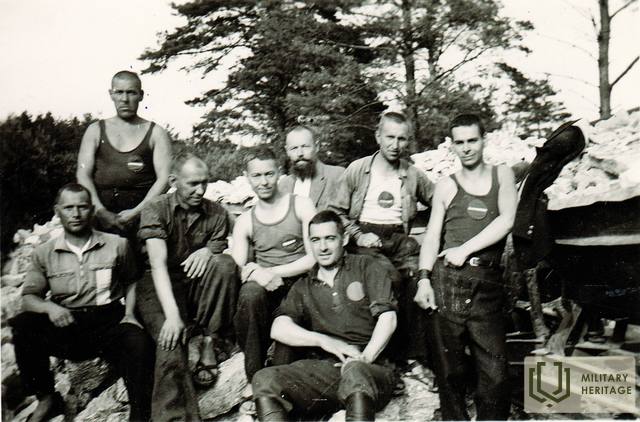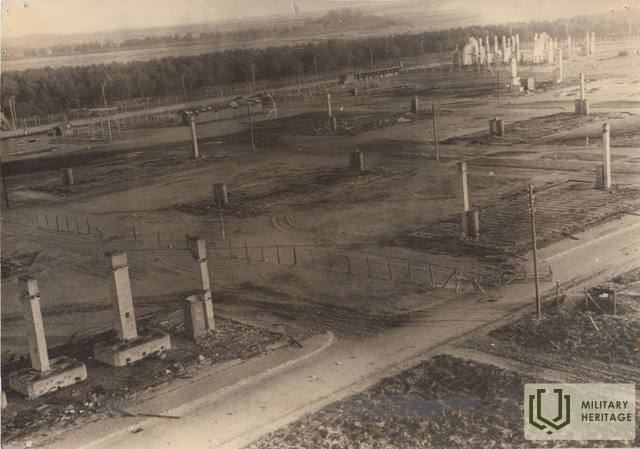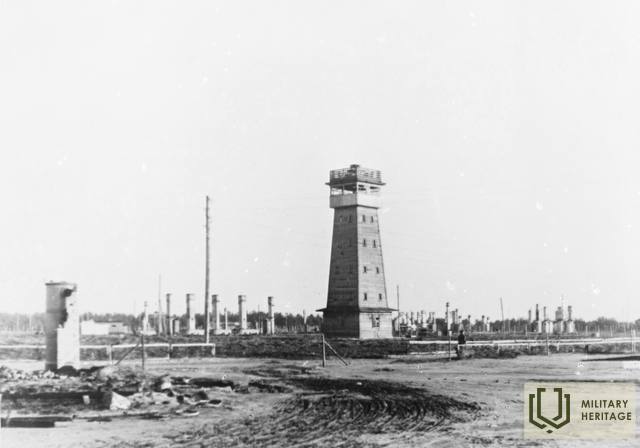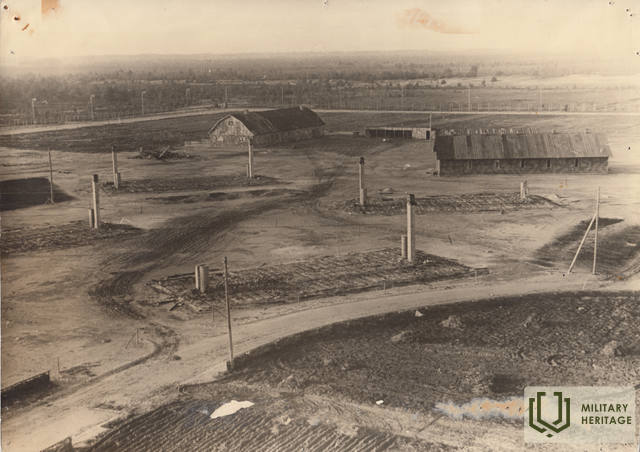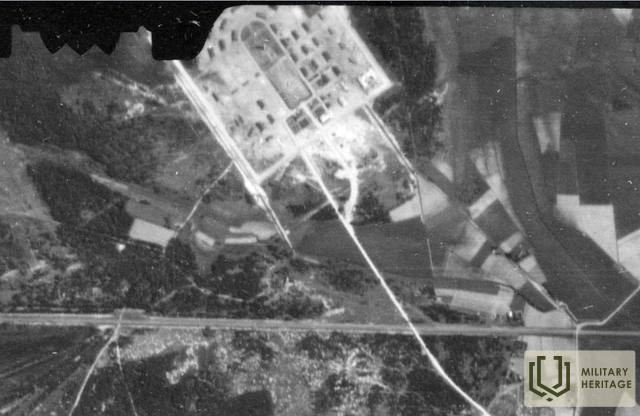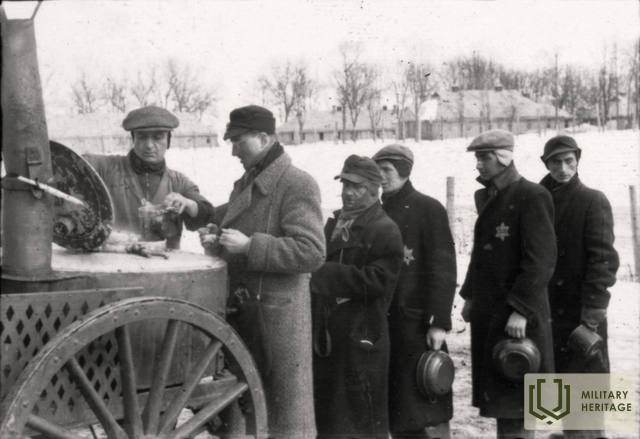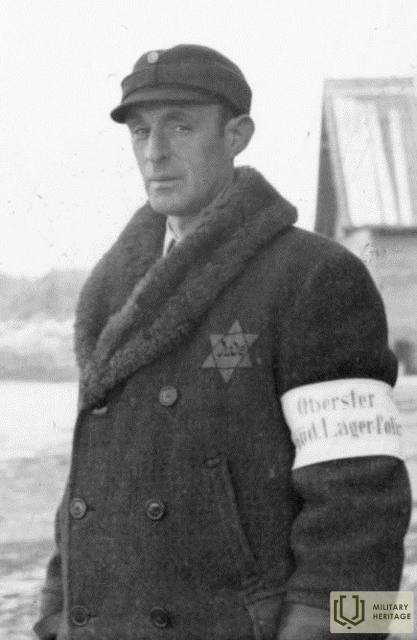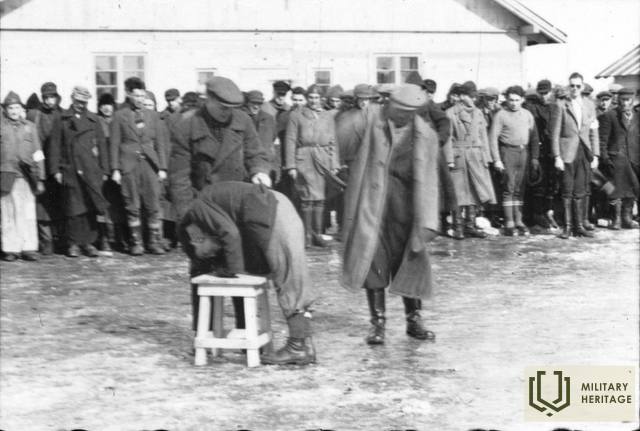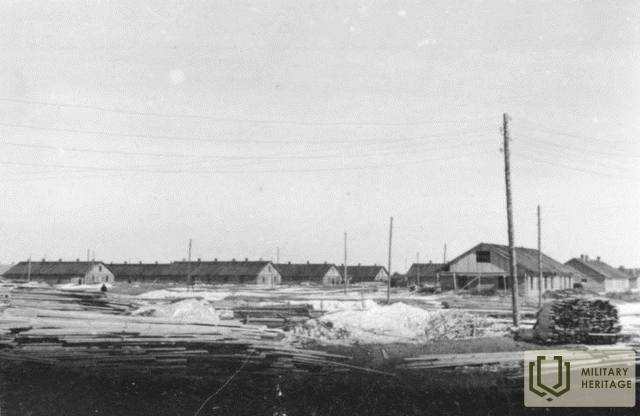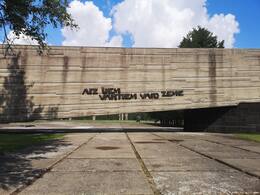Salaspils Memorial Ensemble II World War II
The construction of the Salaspils camp began in October 1941, when local construction workers, as well as Soviet prisoners of war and prisoners from Riga Central Prison, were involved in its construction. Starting in December, the camp's main labor force was about 1,500–1,800 Jews deported from Germany, Austria, and Czechoslovakia. From May 1942, Salaspils began operating as an expanded police prison with an attached labor education camp.
During its existence, the camp was visited by about 1,000–2,000 truants, who were sentenced to imprisonment for no longer than 56 days. The majority of those who were imprisoned in the expanded police prison were political prisoners, who were held there in security detention (Schutzhaft) until the end of the war, and their earlier release occurred only in isolated cases. A large number of them had been arrested for collaborating with the Soviet occupation regime in 1940–1941. Among the political prisoners were also more than 100 Latvian and Polish members of the national resistance movement, including members of the Latvian Central Council Konstantīns Čakste, Bruno Kalniņš, Ludvigs Sēja and others. The total number of political prisoners during the camp's existence could reach 5,000–6,000 people.
In February–April 1943, at least 4,500 people from Belarus who had been arrested during the anti-partisan campaign “Winter Magic” (Winterzauber) arrived in Salaspils. In August–September 1943, 3,284 people who had been arrested during the forced labor campaign “Summer Journey” (Sommerreise) in Latgale were brought to Salaspils. In both of these campaigns, able-bodied men and women brought to Salaspils were sent to work in Germany. At least 2,741 children were given to farmers in the parishes of the Riga region and to foster families. Some of the children ended up in the Riga Holy Trinity-Sergius Women's Monastery, as well as were sent to orphanages in Bulduri and Saulkrasti.
At the turn of 1942 and 1943, a "special department for Estonians, Latvians and Lithuanians who had been convicted by SS and police courts" was established in Salaspils, and starting in the spring of 1943, soldiers of Baltic and other nationalities from police battalions and legions who had been convicted of various offenses for a period longer than three months served their sentences in the camp. Lithuanian General Pāvils Plehavičs was briefly in Salaspils with his staff officers, totaling about 50 people. In the summer and autumn of 1944, about 2,000 of the military personnel imprisoned in Salaspils were involved in several army penal and construction battalions.
In May 1942, a double (2 meters behind each other) barbed wire fence was built around the camp. Along its outside, at a distance of 60-70 meters and at a height of 6-7 meters above the ground, the camp guard was on duty 24 hours a day in six watchtowers built above the barbed wire fences. The area around the fences was illuminated. It was not allowed to approach the fence closer than 20 meters. In the middle of the camp, between the barracks, there was a water tower. On top of it, searchlights and machine guns were installed, as well as a siren, which was turned on in case of escape. The prisoners' barracks were arranged in three rows in a horseshoe-shaped circle, and their numbering began from the right side of the commandant's office. By May 1943, about 30 residential and work barracks had been built in the camp. Of these, about 14-15 were prisoner barracks, which usually housed about 200 people, but there were also cases when there were fewer than 100 or more than 600 prisoners. The camp territory also included the commandant's office; the guard's residential and service barracks; the camp's senior office and residential barracks; a hospital and a barracks for medical needs; a kitchen; a post office; a cell where prisoners' clothes and documents were stored; carpentry, mechanical, straw shoe, shoemaker, tailor, artist, souvenir-making workshops; a laundry and disinfection room; and a solitary confinement cell.
Already at the end of 1943, the mass transfer of Salaspils camp prisoners to Stutthof, Neuengamme, Buchenwald, Mauthausen-Gusen, Sachsenhausen, Ravensbrück and other concentration camps in Nazi-occupied Poland and Germany began. The last prisoners left Salaspils on September 29, 1944, when the camp was liquidated and most of the remaining buildings were burned. The exact number of prisoners and those who died in Salaspils camp cannot be determined due to the lack of a register of detainees, as their file was destroyed. It is only approximately possible to establish that around 17,000 to 18,000 people were imprisoned in Salaspils at various times, of which around 8,000–9,000 were persons transferred in special actions. By July–August 1942, about 1,000 foreign Jews had died in Salaspils due to the harsh living and working conditions, inhumane corporal punishment, and death sentences. According to the calculations of former Salaspils camp inmate Arturs Neparts, during the camp's existence, 100 political prisoners were shot on the night of May 5/6, 1943, after their transfer to Riga Central Prison, 400–500 died from disease, about 25 were shot while preparing to escape or during their escape, 100–150 people died from inhumane punishments, and several hundred emaciated children died of typhus, dysentery, and other epidemics and diseases that had spread to Salaspils. It can be very roughly assumed that the number of people who died in the Salaspils camp reached at least 2,000 people.
More information sources
https://www.sargs.lv/lv/vesturiski-jutigie-jautajumi/2015-06-05/salaspils-nometne-un-tas-vesture-1941-1944
Related objects
Salaspils Memorial Ensemble
Salaspils Memorial and historical exhibit is located in Salaspils municipality, 1.2 km from the Riga-Daugavpils A6 highway. The Salaspils Memorial was unveiled in 1967 on the site where during World War II the Salaspils Camp was once located. It is a place that was used for Soviet propaganda and is shrouded in myths and half-truths. It is a good representation of the Nazi crimes and Communist ideology that was carried out during each of the occupations. This repressive camp was a part of the German penitentiary system. It had similarities with concentration camps, but it was not the same thing. It was created so that there would not be a disproportionate number of prisoners in Riga prisons. This camp was an “extension of the police prison”. And a variety of people were imprisoned here – Jews, the Red Army prisoners of war, absentees, political prisoners, criminals, prostitutes, members of the Latvian resistance movement, Baltic soldiers in the German Army or police, and others. The camp could hold up to 2,200 prisoners. The main cause of death (~2000) was malnutrition, working conditions, corporal punishment and illness.
Related stories
About the Salaspils Memorial as a symbol of the ideology of the Soviet occupation regime.
The description vividly describes the extent to which the memorial site is politicized and its role in the ideology of the Soviet Union. The text mentions that one of the main goals is the fight against the “rebirth of fascism”. This indicates that efforts continue to use the ideological infrastructure to hide the crimes of the communists and prevent the opinions of those who think differently. Memorial sites, Soviet army cemeteries and museums, and various cultural events maintained the myth of the “liberation of Latvia” and the “fraternal Soviet Union”. The facts of Nazi crimes were used to create a distorted view of the events of World War II in Latvia.
About the events of the children's colony "Rūķīši" during the pre-war and World War II periods
Children were taken from the families of partisan supporters. In March 1943, there were 1,100 children in the Salaspils camp. About 250 children died of measles, typhoid fever and other diseases, several hundred children were transferred to farms in surrounding parishes, and about 300 children ended up in orphanages in Riga's Jurmala, Igate and Saulkrasti.
In Saulkrasti, the children ended up at the Latvian Children's Aid Society's children's colony "Rūķīši".




